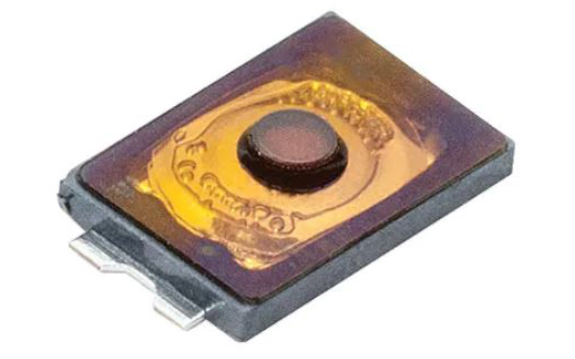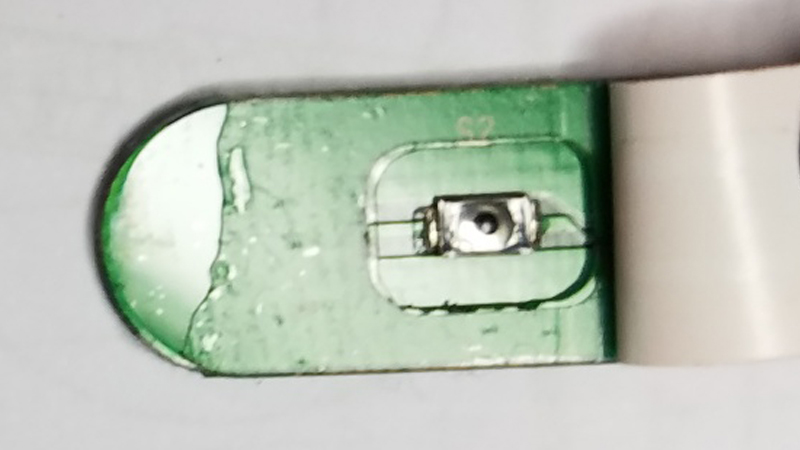Tactile Response Optimization for Low-Profile Membrane Switches
Challenge
This project was for an existing Epec customer that is a well-known medical device manufacturer. Epec had been a previous supplier for front panels, several types of HMIs, and also custom battery packs to this customer. The Epec outside sales team had an existing relationship with the customer’s procurement and engineering teams, but the group tasked with this specific project had never worked directly with Epec. Once a statement of work and drawing package was ready, Epec was recommended as a potential supplier.
When the customer first supplied the drawing package, like many rapidly evolving projects, the scope of work was piecemealed. There were three different document types that needed to be reviewed collectively to define the scope of work. There were 3D models, 2-D PDFs, and sectional views with notes and critical design features.
For projects like this, it is important to quickly figure out the must-have vs. the nice-to-have requirements. This was important to determine early on during development because the customer’s timeline was most critical. Once it was understood what the customer was trying to accomplish with their design, we held a conference call to listen to them and learn more about the project details.
This customer was launching a new medical device with a brand-new technology platform, and they were mandated to reduce the size of the product by more than 20%. Space was at a premium, and every component used was optimized for its size. They were trying to create a more portable and sleeker medical device, which required an extremely small membrane switch. Based on their preliminary sizing, the button could be no more than 4mm in diameter. Part of the customer must-haves, they needed to incorporate a waterproof seal, buttons, and several LEDs in an 8mm-wide maximum width. They quickly found that integrating such small components on a narrow membrane switch was especially challenging. They knew what they wanted but did not have the design experience to bundle all the desired design features into one solution.
Solution
The customer had already launched hard tooling for their enclosure, and they passed the point of no return for several other system components. They had no choice but to figure out a way to get the switches, LEDs, and waterproof seal into an 8mm wide membrane switch. They were prepared to reduce some of their design needs, but this was to be avoided at all costs.

Example of a surface mounted tactile switch.
During the quoting process, Epec cautioned them that extensive testing and development was necessary to make sure the buttons could be operated properly and that their tactile response, the feel of the button as it’s depressed, was satisfactory. At this point, Epec prepared a detailed plan offering several samples within the customer’s timeline. Five separate switch samples were prepared to offer varying degrees of embossing and button size to arrive at the optimum tactile response.
The solution chosen was a rigid PCB membrane switch with a handful of surface mounted tactile switches. These tactile switches were carefully selected because of their footprint, their overall height, and their ability to interface properly with the front overlay. The challenge here was there was only an 8mm-wide footprint available to place these switches. This involved SMT soldering the switches to a multilayer circuit board. Then we had to properly seal the switch assembly which involved a lamination process bonding the materials.
As the project neared completion, it became evident that the tactile response of the switches, how the button feels for the user, was incredibly susceptible to slight process variations. Modifying an embossed feature or cutout by less than few thousandths of an inch created a discernable change in button performance. Since a consistent product was an absolute requirement for the customer, the project benefited from the use of hard tooling and other precision assembly techniques to deliver a repeatable product.
This was an involved project because it required mechanical, electrical, sourcing, and manufacturing support to address all program objectives. These facts coupled with an aggressive development timeline meant our team needed to quickly develop a plan and then act on it.
As a final solution, we paired an off-the-shelf normally open tactile switch with one of our more traditional membrane switches. This included a multilayer PCB with a handful of additional features designed into the solution. LEDs and specialty filter materials were added to complete the stack-up. Laminated films and sheet adhesive were used to seal the switch assembly.
Result
We quickly recognized the risk with the design and pointed out critical steps necessary to meet the program objectives. Taking proactive steps to identify roadblocks and prepare for them allowed our team to move quickly through development. We launched our plan to create 5 unique samples offering several tactile responses and button performances. This way it would make certain all customer stakeholders could support the final design.
Our samples were presented to the customer, and their team was given time to operate the switches and test the user experience. A final design configuration was selected with the optimal stack up height and button performance.

Membrane switch stack-up with the overlay removed.
The final solution was a narrow custom membrane switch that offered several key design benefits. It served as a low-complexity product while still offering high design reliability. The customer had a maximum width requirement of 8mm, which limited design options. Membrane switches at widths less than 12mm are difficult to process since there simply is not enough room to place components. The eventual design was optimized to fit within the 8mm wide envelope allowing the customer to move forward with their preferred membrane switch interface.
Looking For A Custom Membrane Switch Solution?
From design to production, our team of experienced engineers at Epec is here to help you design a production ready membrane switch solution for your application.
Request a Quote Request Design Support

